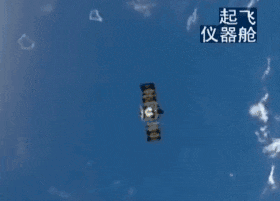Experts from Zhejiang University have developed a pulsed laser emitter with a power of one megawatt. According to the South China Morning Post, it weighs one and a half kilograms and is small enough to place it on a satellite. The emitter will be able to identify and track targets, as well as quickly transmit information.
High-power laser installations are usually bulky and heavy. For example, the mass of the ABL anti-missile laser is about 55 kilograms per kilowatt of power. And the system that the US Missile Defense Agency is developing for drones, this figure will have to be three to five kilograms per kilowatt.
Liu Chong and his colleagues from the Faculty of Optical Sciences and Technology of Zhejiang University have developed a megawatt pulsed laser emitter that weighs 1.5 kilograms. It's the size of a 500-milligram jar. The researchers say that the device can produce up to 100 pulses per second in space conditions for almost half an hour without overheating.
The power of each pulse is about five millijoules. This is not enough to shoot down a rocket or satellite, but it is enough to identify the target, accurately track its movements and make detailed images of it. In addition, two satellites with such emitters will be able to establish communication with each other and quickly transmit information to each other over long distances. It is not specified how far these distances will be.
A small laser emitter received a cooling device made of copper and indium. It absorbs excessive heat, which can affect the operation of satellite components and the quality of the laser beam. The developers claim that their device is ready for testing in space. But it is not known when this will happen.
The Chinese are also developing other laser installations, including combat ones. Earlier we wrote about the tenders of the People's Liberation Army for the development of an aviation laser to protect aircraft from enemy missiles and fire at other targets.
Vasilisa Chernyavtseva

